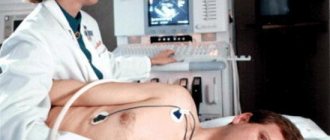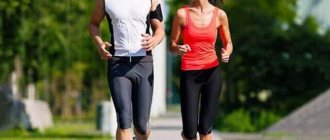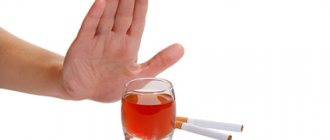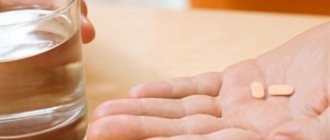What is possible?
Hypertension and sport are quite compatible concepts. With this diagnosis, a person is allowed to:
- take bike rides. Using an exercise bike is useful, but it is better to ride in the fresh air at a leisurely pace;
- swim. This is an ideal option for excess weight and joint pathologies. This sport strengthens muscles, improves blood circulation, and saturates the body with oxygen. You should swim three times a week for 45 minutes;
- do gymnastics in the pool. By reducing body weight in water, muscles relax, and exercise has a beneficial effect on external respiration;
- to walk. At first, it is recommended to walk short distances, gradually increasing the load until you can walk 4 km in an hour;
- do daily exercises. Gymnastics should include turning the body and head, bending arms and legs, walking in place;
- to take dance classes. Oriental and ballroom dancing will improve your health and appearance.
Fitness under pressure
Sport is the key to a healthy and happy life. But sometimes it happens that a person’s health does not allow him to engage in physical activity, and then sport seems inaccessible. In the modern world there are many people who have problems with blood pressure. You should never forget that physical exercise is only useful if you listen to your body and try to do everything to the extent possible.
The influence of sport on blood pressure
The first thing you should do in your sports endeavors is consult a doctor. After consultation and diagnostic testing, it will become known what exactly triggered the disease, and only after that can a special, suitable set of exercises be drawn up. We should not forget that when it comes to sports, one cannot miss the point of observing the principles of proper nutrition. In case of hypertension, sport has the following effects:
- reduces blood pressure;
- increases muscle tone;
- improve your mood;
- reduces the volume of fat deposits;
- improves metabolism.
on
Is it possible to exercise with high blood pressure?
Doctors say that playing sports and exercise therapy significantly helps reduce blood pressure. This is due to the fact that this disease often appears as a result of a sedentary lifestyle.
With hypertension, it is important to correctly distribute the load. Fitness normalizes heart contractions and increases the productivity and resistance of the body. In this case, general well-being returns to normal and sleep improves.
And since sleep is the key to good health, you will notice an increase in energy and desire to work. Be sure to monitor your blood pressure. Before, during, and after exercise, measure it with a tonometer.
From all this we can draw the main conclusion - hypertension and sports are compatible things
But it is important to treat them carefully and seriously. It is always worth remembering that training is carried out at optimal room temperature, because changes in temperature can cause pressure surges
Visit the gym, there is an opportunity to find a coach or instructor who will give practical advice. This is due to the fact that diligent exercise, without consulting a specialist, can lead to a deterioration in well-being.
Safe training
Hypertensive patients need to exercise with caution
- Do not drink more than 2 liters of water per workout.
- You need to avoid exercises where your head is lower than your body.
- Start your workout with leg exercises.
- Don't eat sweets before visiting the gym. This can cause aggravation with high blood pressure.
It takes several months to get used to fitness. Train in the gym no more than 3 times a week. For these types of training, different loads are suitable, but light and non-intensive: yoga, exercise bike, aerobics, walking
But in power loads, it is important to observe the greatest restrictions. It is strictly forbidden to engage in active aerobics or suddenly change the position of the head.
When going to the gym and doing exercises, do not hold your breath, breathe as if you were just walking; when this is not to your liking, you should postpone these exercises.
For hypertensive patients, it is better to start training at a calm pace. You should not switch immediately from one complex to another and rest for 10 minutes. You should stop exercising if:
- pain in the chest area;
- feeling weak;
- Blood pressure began to spike.
It’s safe to say that yoga, stretching, and fitness are what people who have problems with blood pressure need. It is sometimes recommended to do 30 seconds of stretching after strength training.
It is important to be careful and understand that inverted poses are not acceptable. If you take Pilates seriously, tell the instructor about your illness so that he can select the appropriate exercises
Swimming is suitable for those who are overweight and have high blood pressure.
Everyone knows perfectly well how good sport is for health. However, it may also be that playing sports will not only not bring benefits, but will also be harmful to the human body. This is especially true for strength training that involves lifting weights. Accordingly, before going to the gym, you should consult with your doctor regarding whether you have or do not have contraindications to playing a particular sport.
But it is possible to use sports for the benefit of hypertensive patients, because there are special programs that have a beneficial effect on the heart muscle.
Training according to Bubnovsky
The principles of this technique are consistency and systematicity. It includes breathing exercises, increasing fluid intake, water procedures and special training.
The exercises are designed taking into account the age and anatomical characteristics of the joints. Gymnastics allows you to evenly distribute the load, increase blood flow to the joints and muscles, due to which they become elastic, flexible, mobile and their tone increases. During training, a person should arch and relax his back, stretch the muscles of his arms and legs, spinal vertebrae and abs, lift his buttocks, and train his feet.
Methods for monitoring blood pressure during sports activities
Before each sport, you should undergo a short examination, which can also be carried out by the athlete himself. Pulse, blood pressure and respirations per minute are measured. After some heavy exercise, measurements are repeated, as well as after the end of the workout.
Normally, indicators can either remain unchanged or slightly increase. This is completely normal. It is important that the athlete’s general condition is satisfactory.
With loads higher than permissible, pulse and blood pressure can jump up to the point of hypertensive crisis. This condition, although dangerous, most often does not indicate a pathology of the cardiovascular system. This only means that a person should refrain from such stress and prepare for it little by little.
To properly conduct training, you should follow simple rules:
- Do not rush into the embrasure. No one can break a running record in the first lesson, everything happens gradually.
- It is advisable to first consult with a knowledgeable person or hire a trainer.
- Choose the sport that suits you best. If running makes you feel unsatisfactory, try something else.
- Before training, it is better not to eat anything for an hour, but do not starve yourself. The best time to exercise is in the morning before breakfast.
- Don't forget to drink water during your workout. Dehydration develops more quickly during exercise because body fluids are lost through sweat.
- You should not drink during exercise; to do this, you need to take a short minute break.
- You should not sit or lie down while playing sports, the pressure changes due to the position of the body, and during physical activity the reaction may be inadequate.
- You shouldn’t stop at one workout, but continue to work on yourself.
Strelnikova's technique
This method is known to many people, as it gives good results in the treatment of various diseases, including hypertension. The essence of therapy is to perform breathing exercises based on short and noisy inhalation through the nose with a frequency of three breaths in two seconds and exhalation through the nose or mouth.
While inhaling, you should compress your chest. Regular practice will saturate the cerebral cortex with oxygen, which will speed up and improve the quality of metabolic processes in the body.
Strelnikova’s gymnastics should be performed twice a day for an hour, during which up to five thousand breaths are taken. It improves blood and lymph flow, massages the abdominal organs.
Rules for loads
There are some other rules that must be followed during exercise so that the body does not suffer:
- During training, keep a water bottle nearby and drink as needed;
- Monitor the room temperature! It should not be too low or, on the contrary, high. It is especially dangerous to exercise in the heat;
- Swimming should be at a comfortable temperature for the body.
You can increase the load only after consulting a doctor. A specialist will be able to determine the optimal exercise options for the body, taking into account the characteristics of the disease.
If you follow the recommendations, exercise will be beneficial and can improve your blood pressure. The main thing is to observe moderation in everything and not to exhaust yourself.
THERE ARE CONTRAINDICATIONS CONSULTATION WITH YOUR DOCTOR IS REQUIRED
Author of the article Svetlana Anatolyevna Ivanova, general practitioner
Blood pressure is not a stable indicator.
It can be influenced by a large number of factors: sleep, meals, stress and physical activity.
Normal values for a healthy adult are 120/80 mmHg.
The standard is considered to be the indicators of an adult healthy man. But if you conduct a Holter study and record your heart rate, cardiogram and blood pressure numbers throughout the day, you will notice that they all change for various reasons.
Static load
Static loads are exercises during which the muscles tense but do not contract, that is, there is no movement. With such gymnastics, the muscles hold the body or a certain part of it motionless. An example of static loads is a plank. To perform it, the body is held in a static position for a certain time. The exercise works the abs and other muscles.
If you have problems with the cardiovascular system, including high blood pressure, such high-tension activities are not recommended.
Pressure after exercise
Blood pressure after physical activity can either increase or decrease. This is due to the individual characteristics of the body, the functioning of the cardiovascular system and the type of physical exercise performed by the person.
Under the influence of physical activity, blood flow sharply accelerates, the intensity of heart contractions increases, vasodilation is observed and the body releases adrenaline into the blood, which stimulates the functioning of the cardiovascular system and helps to increase blood pressure, but if the tone of the parasympathetic nervous system predominates in a person, it may not rise at all.
Causes of increased blood pressure during exercise
When a person begins to exercise, blood flow in the body sharply accelerates, acting on the hypothalamus, adrenal glands and cerebral cortex, adrenaline is released into the blood and the heart rate increases, as a result, blood flow in the vessels, veins and arteries increases, and blood pressure increases. When performing intense physical exercise, blood flow accelerates several times, and blood pressure can also rise several times. This happens because active physical exercise improves the functioning of the cardiovascular system:
- Blood circulates well through the vessels, veins and arteries, reaching all parts of organs and systems.
- The body is well supplied with oxygen.
- The walls of blood vessels and arteries intensively contract and tighten, regulating blood flow.
- Hormonal secretion and metabolism in the body increases.
An increase in blood pressure during physical activity has a positive effect on the functioning of the human body, but if these indicators do not exceed the permissible norm, because Overloading the body negatively affects the functioning of the human cardiovascular system.
The indicators are different at each age, for an ordinary person the value is 120/80 mmHg. Art. is the norm, but with intense exercise, the systolic indicator can increase to 190-200 mm Hg. Art., and diastolic rises to 90-120 mm Hg. Art. This depends on the type of exercise performed.
Thus, running, volleyball, basketball, football, aerobics, dancing and exercise can maximally raise blood pressure levels.
Therefore, it is necessary to exercise in such a way as not to harm your own health.
This requires a number of measures to monitor the activity process and the functioning of the cardiovascular system. The table below shows the normal blood pressure for each age category.
How to control the state of the body during exercise?
Pressure during physical activity can increase several times, so you need to take care not to provoke an excessive increase or surge in it; to do this, you need to follow the following recommendations:
- You should always visit a doctor before starting any sports activities. A specialist will not only examine the body, but will also help determine the type of load that is suitable for this particular body.
- If a person is professionally involved in any sport, then the procedure for measuring blood pressure 20 minutes before the start of classes and 10 minutes after them is mandatory. This allows you to control your blood pressure during training and is an excellent prevention of the development of diseases of the cardiovascular system.
- For any exercise or activity, it is important to wear the right clothing. The body must breathe well and there must be proper air circulation to all areas of the body. Clothes should not fit tightly to the body and squeeze areas of it. Outerwear, T-shirt and trowel should not be at the neck. Turtlenecks and tight-fitting T-shirts are not allowed. Pants, trousers and bicycle shorts should also fit loosely. This is necessary not only to ensure good air circulation, but also so that in critical cases it is possible to provide first aid to a person without obstacles.
- To engage in active exercise, the room must be well ventilated and equipped with a ventilation system, ventilated windows and vents, because during physical activity the body needs pure oxygen, and an excessive amount of inhaled carbon dioxide can provoke dizziness and attacks of acute heart failure. If physical exercises are performed at home, the requirements for clothing and space remain the same.
- Drinking regime. During physical activity, it is necessary to especially monitor your drinking regime. The daily dose of fluid necessary for the body is 2 liters of clean water. This does not include juices, compotes, teas, etc. If it is intense physical activity, you can drink up to 2.5 liters of water per day. Mineral water is best because... it is rich in essential microelements that support heart function, such as K and Mg.
When does blood pressure drop?
In some cases, blood pressure may not increase during physical activity, but, on the contrary, may decrease. This happens if a person experiences vagotonia in everyday life. In people with vagotonia, blood pressure does not rise, but on the contrary, it can rise by 10-20 mmHg. Art.
reduce your performance in stressful situations. With some intense physical exercises, such as cycling, running, exercise equipment, dancing, it increases, but not by more than 10 mm Hg. Art. With vagotonia, sharp downward pressure drops are also observed for no apparent reason, even during physical activity.
Such attacks are accompanied by pain in the heart area, shortness of breath, fatigue, i.e. a person feels weak and this leads to disruptions in the functioning of the entire human body. In such cases, physical activity is contraindicated. Only walking and light jogging can be recommended.
If this is a child, then gradual physical activity on the body can restore it over time.
In athletes and adults, low blood pressure after training is observed very often, but, as a rule, it returns to normal 15-25 minutes after the end of the training. While ordinary people can cancel physical activity, athletes cannot live without it.
Therefore, athletes perform certain measures: they monitor body parameters before training, during training and after it using a tonometer. Those athletes whose systolic pressure is below 90 mmHg are not allowed to participate in training. Art.
, and diastolic - below 60 mm Hg. Art. It is necessary to include foods rich in K and Mg in the diet; the diet should be enriched with fiber and green vegetables. At the same time, constant monitoring of the athlete by a cardiologist will save human life, because
Cases of death during sports in people with low blood pressure are quite common.
When should you stop exercising?
It is better to avoid physical activity if:
- a person experiences surges in blood pressure in normal life;
- pathologies of the heart are observed and they are the cause of the surges;
- the pressure does not return to normal 15-25 minutes after the end of physical exercise and the person feels pain in the heart area.
In conclusion, it is worth noting that if an adult’s blood pressure drops during physical activity, their duration can be reduced or replaced with more passive activities.
Source: https://daohotei.com/medicina/gipertoniya/davlenie-posle-fizicheskoj-nagruzki
Aerobic exercise
If you have hypertension, you can do aerobics, but one workout should last no longer than fifteen minutes. It is recommended to do some stretching first to prepare your body.
Aerobics is good to do in the morning. It will help normalize the functioning of all organs. Sudden loads that increase heart rate should be avoided.
Stretching, circular movements and warming up the neck, turning and stretching are useful. They will prepare the body for daily stress and help prevent an increase in blood pressure.
Acceptable exercises
The first rule when doing any type of exercise is not to overdo it. Overwork will bring the opposite result - blood pressure after physical activity without proper preparation will only increase. In addition, there are some exercises that should be prohibited if you have hypertension.
- Exercises involving lifting heavy weights.
- Static load on certain muscles, while the whole body is motionless, fixed in one position for a long time.
- Rhythmic activities, which are characterized by sudden changes in movements.
- Exercises that require you to bend your head down put intense stress on your back and neck.
- Exercises that require throwing your head back, holding your breath, and raising your legs above head level.
- Any types of jumps.
- Throwing at a target.
- Fast short distance running, shuttle running.
- Quick squats and quick stair climbing.
- Rope climbing.
Signals requiring you to stop training:
- increased blood pressure (especially sudden and severe);
- cardiopalmus;
- severe shortness of breath;
- pain, heaviness, burning in the heart area;
- the appearance of black spots or darkness before the eyes;
- there was noise in the ears, dizziness;
- attack of nausea;
- swelling;
- numbness of the arms or legs, face, jaw, neck.
Since smooth movements and a calm pace are recommended for high blood pressure, stretching exercises are ideal in this situation. This type of physical activity strengthens the whole body, makes it flexible, flexible, and trains the heart without tiring it. It is enough to train for 15 minutes every day. Good stretching can serve as a preparatory step when moving on to exercises with increased load.
Dance exercises are a good way not only to strengthen the heart and blood vessels, but also an opportunity to lift your spirits and recharge with positive energy, which is also very important for the prevention of hypertensive attacks. To prevent increased blood pressure, calm ballroom dancing (slow waltz) or smooth movements of oriental dances are recommended.
Everyone needs daily exercise. What physical exercises should be included in morning exercises? For hypertension, it includes general strengthening exercises for different muscle groups: smooth turning of the body, light slow lateral bends, raising the lower extremities and bending the upper, calm walking in place. In order for the body to wake up and recharge itself with energy, it is enough to devote 15 to 30 minutes to morning exercises.
Running and walking
With increased pressure in the arteries, walking and walking at a slow pace are allowed. At first it will be difficult for a person with hypertension, but it is important to get used to running every day at the same time, regardless of weather conditions.
When running, you need to be in a relaxed state, but you cannot increase the speed too much, even if you feel normal. Warming up before a run is useful.
In this sport, the following rule is followed:
- On the first day you need to run no longer than a quarter of an hour at a slow pace.
- After two workouts, increase the duration of the race by 5 minutes until the session lasts 40 minutes.
Also read: How wines affect blood pressure
During training, it is important to monitor how the body reacts to it. If breathing is restored within 10 minutes, then you can continue to exercise in the given mode.
Features of running with hypertension
To normalize and maintain acceptable blood pressure values, doctors recommend running. If you jog every day, you can not only strengthen your legs and improve your figure, but also provide an intensive supply of oxygen to the body to strengthen the heart, stimulate cerebral circulation, eliminate shortness of breath, and correct excess weight. After half an hour of jogging, endorphins produced by the pituitary gland help hypertensive patients feel a state of boundless happiness. Here are valuable recommendations from experts regarding this sport:
- Running increases cardiac endurance and reduces mortality rates by almost 3 times.
- Hypertensive patients are allowed to run if their blood pressure does not exceed 160 mm. rt. Art.
- You need to exercise daily: run for a long time, but not fast.
- It is necessary to choose a pace that corresponds to acceptable heart rate values.
- It is recommended to start training by covering a distance of 1.5 km, without stopping suddenly.
- How to celebrate a birthday in an original way
- How to induce vomiting
- Cream for mastic
Swimming
It is quite possible to combine hypertension and sports if you follow all the recommendations. One of the most useful activities for this diagnosis is swimming. It trains the entire cardiovascular system.
Water exercises are recommended for obese hypertensive patients. This will provide the necessary level of physical activity and reduce stress on the joints.
Thanks to regular exercise, you can get rid of extra pounds and prevent the development of various pathologies of the cardiovascular system.
During classes you must follow these rules:
- Train three times a week for half an hour.
- Gradually increase the intensity.
- At first it is better to swim several distances at a slow pace, gradually increasing speed.
- To learn proper swimming and breathing techniques, you can attend special classes.
Hypertension in athletes
Unfortunately, arterial hypertension is a very common disease among athletes. This is especially true for big sports. This is due to excessive training that exceeds the body's internal reserves, the desire to win at any cost, ignoring the advice of a cardiologist, and the use of doping agents containing substances that increase blood pressure. Special diets recommended for athletes may contain additives such as caffeine and ephedrine. Systematic use of the latter will inevitably lead to hypertension. All this is the price of an unprofessional approach to training.
Regularly exceeding the permitted loads leads to disastrous results: the development of heart diseases and associated complications, a significant increase in loads can even lead to death.
Blood pressure increases especially often in athletes involved in bodybuilding. In order to reduce the risk of developing hypertension, those who like to build muscle mass should definitely alternate strength exercises with endurance training (jogging).
What provokes the development of hypertension in athletes:
- early children's sports, specializing in one sport;
- short recovery period between intensive exercises;
- increase in loads every week by more than 10%;
- when one workout includes several types of intense exercise;
- too long a period of active training without sufficient rest (from three weeks in a row and above).
Only moderate exercise is beneficial for overall health and for lowering blood pressure. Otherwise, sport can cause irreparable damage to the body. When choosing a type of physical activity, a hypertensive patient must weigh his capabilities against the loads that will have to be overcome. All training must be carried out with constant blood pressure monitoring and under the supervision of a doctor.
The following sources of information were used to prepare the material.
Precautions
Sports for hypertension is a rather difficult question, since not all types of it will have a beneficial effect on the patient’s condition. It is important to take into account contraindications and discuss the possibility of playing a particular sport with your doctor.
For hypertension, the following are prohibited:
- Strength exercises with weight lifting.
- Running at a fast pace.
- Static impact on certain muscle groups.
- Rhythmic gymnastics is contraindicated for second-degree hypertension.
- Exercises that increase the load on the muscles of the back and neck and require bending down.
Exercising in the gym and at home helps lower blood pressure, as not only the body is trained, but also the blood vessels.
During exercise, a person may experience headaches and dizziness. This occurs quite often, and if the condition worsens, you need to measure blood pressure in order to promptly notice the development of a hypertensive crisis. There is no need to limit yourself in playing sports, but it is important to follow the following recommendations:
- Avoid eating sweet foods before training. It increases blood pressure and, in combination with stress, can cause an exacerbation.
- Start the lesson from your feet. Thanks to exercises for the lower extremities, a large volume of blood will flow to this part of the body.
- Drink as little water as possible during exercise. You can take a few sips when your mouth gets dry. But you shouldn’t drink a couple of liters of mineral water at once.
- The intensity of training should be medium. Active exercise leads to the development of tachycardia and increased blood pressure. Therefore, doctors recommend performing supersets or separate approaches.
- Exercises in which the head is located down should be avoided. They will negatively affect your health.
The norm of blood pressure in athletes depends on the type and intensity of exercise. For people who professionally engage in sports, the risk of hypertension increases significantly, since during prolonged training the heart works to the limit of its capabilities.
The problem usually occurs among security forces. But with the help of aerobics, it is possible to maintain blood pressure at a normal level, due to increased elasticity of blood vessels and their strengthening.
Hypertension is not one of the diseases for which it is necessary to limit physical activity. When you first visit the gym, it is enough to perform up to five exercises, preferably aimed at your legs.
If your health allows, the intensity and number of approaches can be increased.
Sports recommended for hypertensive patients
The choice of sport for high blood pressure should be approved by a doctor. A specialist, after analyzing data on a person’s objective physical condition, will help you choose the type of physical activity that does not significantly increase blood pressure numbers.
As a rule, for hypertension the following are indicated:
- Fast walking, running. Classes are suitable for people without musculoskeletal problems. It is better to train in the morning, on a treadmill in a gym or on the street. You should start with a fifteen-minute jog, gradually increasing the time to 40 minutes. Each run should be preceded by a light warm-up and stretching. If running causes shortness of breath, you should do a few bends with arms outstretched and finish the exercise with calm walking. After finishing your workout (at home), it is useful to lie on your back with your legs slightly elevated.
- Bike. An exercise bike or a light bicycle is suitable for exercise. Training should be regular (daily) at an average pace, without effort or jerking. It’s better to start with fifteen minutes, gradually increasing the time and pace. Cycling is suitable even for people with high levels of illness.
- Swimming. Physical activity in water is accompanied by a reflex narrowing of peripheral vessels, which dilate after exercise. This increases the volume of blood returned to the myocardium, which stabilizes the pressure. There is also a general relaxing effect, which improves sleep and improves mood.
- Yoga. Hypertension sufferers benefit from many exercises and asanas of this practice. It is worth paying attention to breathing exercises and stretching. But it will be unnecessary to risk inverted poses, strength exercises, shoulder stands or headstands.
- Dancing. Any dance steps (excluding sports rock and roll, break dancing) are an excellent opportunity to strengthen the cardiovascular system, improve coordination, and lose weight. It’s better to start with slow waltzes or tangos, gradually moving to fiery Latin rhythms.
Everyone, without exception, benefits from morning exercises. For hypertensive patients, smooth bends, turns of the neck and torso, and stretching are recommended. And also shallow squats, leg swings, exercises that strengthen the arm muscles with slight weights, and walking.
For complete awakening, a small, individually composed complex lasting up to 15-30 minutes is enough.
Daily physical activity at an average pace, as well as a gradual increase in loads, will bring results very quickly. Studies show that after 3-4 months of regular training, hypertensive patients experience a persistent decrease in blood pressure: systolic by 15-20 points, diastolic by 10 points.
For stage 2 hypertension
If hypertension is at the second stage of development, then there is no need to give up sports. Breathing exercises, physical therapy, swimming and cycling will have a beneficial effect on the condition of the body.
During training, you need to monitor your blood pressure. This will allow timely action to be taken if it increases.
If the disease has entered the third stage of development, then any intense exercise should be abandoned. Only breathing exercises are allowed. You can notice the positive effect of it only after several months of regular exercises in compliance with all the rules.
Video on the topic
What is normal pressure during exercise? Answer in video:
So, what pressure should an athlete have? The norm characterizing pressure after exercise is 131/84 mm Hg. Art. Experts recommend consuming special foods to improve the body’s condition and replenish energy reserves after physical activity. It is advisable to use various fruits, vegetables, berries, nuts, seafood, oils, as well as some foods enriched with potassium.
There is no need to exercise if you have health problems, in particular problems with the functioning of the heart and blood vessels. This will only aggravate the situation and provoke the development of unwanted ailments. It is enough to first consult with your doctor to find out whether you can go to the gym or not. And if you have some serious diseases, the doctor will help you choose the most suitable sports that will not harm the body.
One of the main indicators of a person’s condition is blood pressure (BP). The indicator refers to the force with which the blood ejected from the heart acts on the vascular walls. Blood pressure: measurement procedure, norms. Upper and lower blood pressure are distinguished. The first is an indicator of the work of the heart muscle, the second determines the resistance of the vascular wall. Blood pressure readings depend on...
Correct and timely diagnosis of the disease is an indispensable condition for its further successful treatment. In the diagnosis of many diseases, intracranial pressure is an important indicator. What it is? Why does a deviation from the norm occur and why is it dangerous? How can you tell if your cerebral intracranial pressure (ICP) is abnormal? Let's take a closer look. The essence of the pathology A developed circulatory system entangling the brain...
Nowadays, hypertension has become one of the most common diseases. About twenty percent of the world's population suffers from high blood pressure. It is very easy to miss the first symptoms of hypertension. Many people begin to seek the help of doctors when the disease has already begun to manifest itself in full. A huge number of medications: tablets, drops, tinctures, are forced to be taken by patients. Treatment of hypertension takes years, so it is very important...
Blood pressure is an important indicator of human health. Any deviation from the norm is considered a bad sign. If its level regularly increases, we can say that a person has hypertension, a disease that significantly worsens the quality of life and its duration. First of all, blood vessels and the heart suffer from hypertension. One of the reasons leading to vascular disorders and weakening of the heart muscle is physical inactivity - a sedentary lifestyle. Therefore, to the question of whether it is possible to play sports with hypertension, the natural answer would be in the affirmative.
Prevention and recommendations
Movement is the basis of a healthy body. It is worth keeping yourself in motion constantly, but at a level that the body can withstand. You shouldn't try it.
After all, he will pass the test, but his physiology will change, the consequences of this will be visible in the future, when the compensatory functions of the body normally decrease, and in the case of intense loads this happens not only earlier, but also at a rapid pace.
You need to do sports, measuredly, constantly. Movement heals the entire body, trains and strengthens the heart, lungs, blood vessels, and brain.
Hypertension, unfortunately, always leads to heart attack or stroke and death. Only constant use of antihypertensive drugs could allow a person to live.
Chinese medicine has learned to cleanse blood vessels.
How does physical activity affect blood pressure? Experts note that sports and other intense exercises have a positive effect on the body, especially on the heart and blood vessels. Regular activity helps strengthen vascular walls, normalizes breathing, and also saturates organ cells with oxygen and essential elements.
Patients with hypotension or hypertension should know whether blood pressure increases or decreases during physical activity, how much such fluctuations are permissible, at what level of blood pressure one should avoid excessive exercise, and what types of sports to prefer in this situation.
Training rules
Moderation is the main rule of exercise for hypertension. Competitive exercises such as CrossFit and high-intensity interval training should be avoided. Walking remains the best exercise for people with high blood pressure.
Use dumbbells and kettlebells with caution. Therapeutic exercise with weights can reduce blood pressure by 2-4%, but with an uncontrolled increase from 160/100 mmHg
and above and in hypertensive crisis, exercise is prohibited. As long as the pressure is controlled, physical activity with medium weights or rubber expanders is permissible. Proper breathing regulates pressure: you should always exhale with maximum effort. Some drugs can cause orthostatic hypotension, in which your blood pressure drops sharply when you stand up, which is why you should rise slowly after stretching or floor exercises.
The exercise therapy regimen for hypertension is as follows:
- 30 minutes 5 days a week;
- 50 minutes 3 times a week;
- 20 minutes daily.
You need to give up caffeine 3-4 hours before training. On a scale from 1 to 10, select loads at a level of 4-6 points to achieve mild fatigue, increase breathing rate, but without shortness of breath. Always warm up and cool down.
Treating hypertension with exercise
Treatment of hypertension is most often limited to taking medications.
But few people know about other treatment methods. Physical exercise is considered the most effective.
Benefits of physical activity
Some people suffering from hypertension lead a sedentary lifestyle, thinking that exercise is contraindicated if they have hypertension.
As practice shows, even slow walks reduce the risk of developing the disease. According to research, minimal physical activity already lowers blood pressure.
Therefore, doctors specially develop exercises for hypertensive patients. And sometimes you can even lower your blood pressure by learning to control your breathing.
The main rule is regularity of classes. This helps reduce stress on the heart. With regular exercise, improvements will appear within six months. This also applies to people over 50 years of age.
What physical exercises can you do?
The best option is cardio exercise. Strength exercises are strictly contraindicated for hypertension. They lead to increased blood pressure.
Also, the patient is excluded from excessively intense training and heavy lifting. Strength exercises are the use of sports equipment.
Patients can do exercises at home. The simplest cardio exercise is walking. And you don’t need to invent something - regular walking will do.
Ban on training
If blood pressure rises every day, a person feels it, loses physical strength and performance, it is necessary to interrupt training and conduct a thorough diagnosis.
When the tonometer numbers rise to more than 140/90 mmHg, hypertension is diagnosed, in which training is strictly prohibited, but light exercise or exercise, light jogging in the morning is not canceled.











